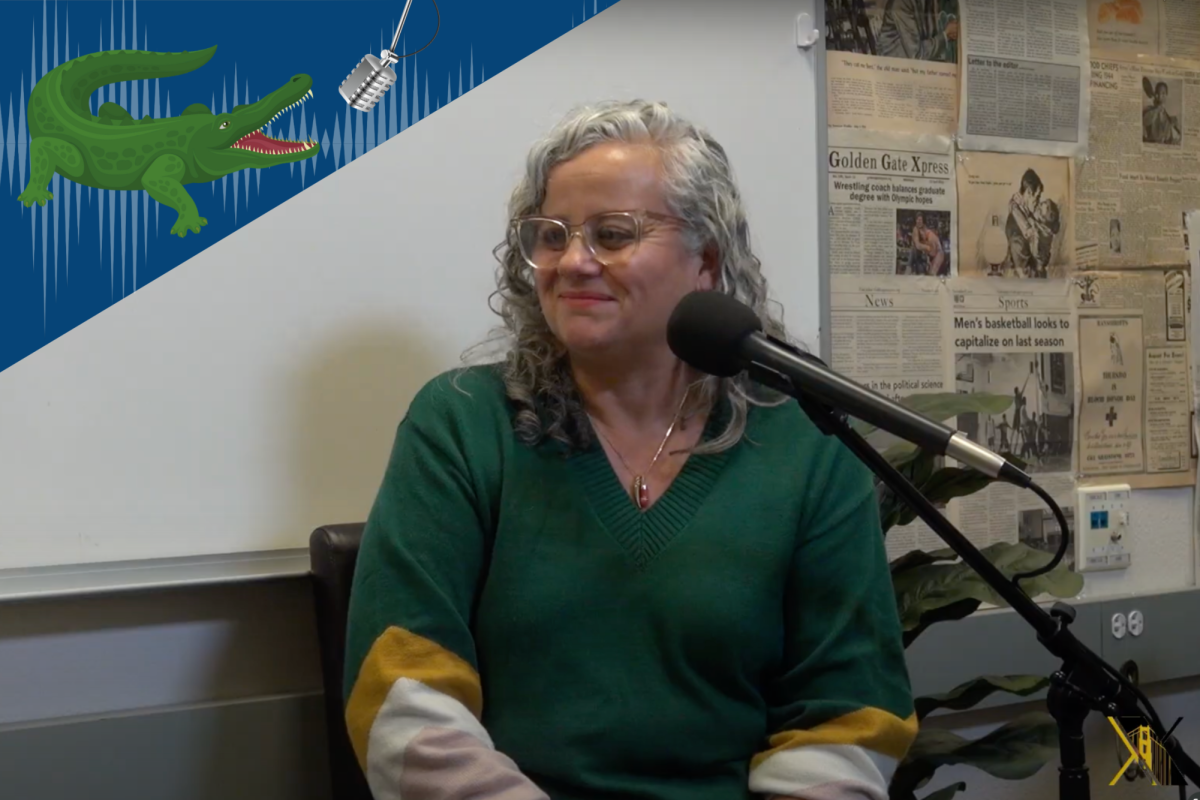VICTOR: 00:05
Known for its hippie movement in the ‘60s where San Franciscans drew the world’s eye with Vietnam War protests, Haight Street fostered a popularity with being home to artists like Grateful Dead, Janice Joplin and Jimi Hendrix…
…Okay the last one may or may not be true, but Jimi has a whole house named after him in the middle of Haight Street.
JASON: 00:21
In between all of the cafes, restaurants and gift shops are hella thrift and second-hand clothing stores.
VICTOR: 00:25
My name is Victor Harris Jr —
JASON: 00:27
my name is Jason Hernandez,
VICTOR: 00:28
and this is Haight It or Love It.
JASON: 00:31
My first trip to Haight Street was in 2019. It inspired me to change my sense of fashion. I remember buying a jean jacket and baggy Levi’s pants at Held Over that I was genuinely excited to go out and wear. Now I buy all my clothes second-hand.
VICTOR: 00:43
To be fair, I’ve never been on Haight Street, nor have I ever been thrift shopping.
JASON: 00:4
Bet, I know a few spots.
VICTOR: 00:50
While strolling down Haight Street. You can smell how eclectic it is — stale vintage shops, fresh pizza from Slice House, the incense from Love of Ganesha,… and just a little hint of piss.
COLE FOWLER: 01:03
We’re at Buffalo Exchange. This is where I usually start if I ever come down to Haight — kind of a mix of vintage and modern, you don’t really know what you’re gonna find. This is one of the places where I usually garner up like 20, 30 pieces and have to narrow it down depending on the day we’ll see how we do today.
JASON: 01:18
We tagged along with Cole Fowler, he’s an influencer and helps run one of the most popular social media pages associated with San Francisco State University: Fits of SFSU.
COLE FOWLER: 01:27
I’ve got like a Disneyland tee that looks somewhat vintage, it’s definitely got an older tag. And the material is like super heavyweight and thick. So, that makes me think it’s a little bit older.
VICTOR: 01:42
Amongst the sea of racks, we ran into Clare Antonow. She’s from Palo Alto, but she loves to come down to Haight Street to do her shopping.
CLARE ANTONOW: 01:49
Well, Buffalo Exchange is super fun, because it’s kind of a mix of like vintage stuff and modern clothes for super cheap. I’m already on Haight Street, and it’s just — you go through and you stop in every store, so might as well stop here. I think the prices are super nice because I feel like they’re generally pretty reasonable like a good price range — not something like crazy outrageous, like 40 bucks for a T-shirt. It’s like going to be less than $20. I feel like it’s just so much more exciting and like personal because the clothing items are often like one of a kind, versus like Macy’s when they produce like thousands of one item. So, it’s a lot more special to get like one item — even from here I’m just like, I don’t know, this is — no one like has this anymore.
ACT 2
JASON: 02:25
After COVID, big-name retail stores in San Francisco such as Macy’s flagship Union Square location and Nordstrom Rack on Market Street have closed their doors due to a changing retail landscape.
VICTOR: 02:35
So what? Are people not buying clothes? Fashion seems to be dominating pop culture and driving social media content. They’re getting outfits from somewhere. Do you think it’s because of online shopping?
JASON: 02:44
Naw, people are always going to buy clothes, and trends are going to come and go. Thrifting culture has been a part of Haight Street for decades and that’s something not even a global pandemic can seem to wipe out.
SF State Student Lauren Dunn was nice enough to invite us over and show us her closet, which she claims is 95% thrifted.
LAUREN DUNN: 02:59
These I just got — I just bought these. I’ve been wanting cowboy boots for like five years now. And I just — I literally just bought these off of Haight Street. And usually Haight Street is very expensive — these were $65. These dark wash jeans right here are like literally the best thing that ever happened to me because they’re like, they’re big, they’re long and they’re like, they’re such a good color. And I feel like it doesn’t really match — like the form doesn’t follow the function on Haight Street. But it’s nice, I mean, it’s very nice to window shop, to walk around to imagine like, ‘Oh, what if I wear this?’ because the quality is great. It’s just the prices are so crazy. In my opinion, if I were to compare the two I would want at-home prices with San Francisco clothes.
ACT 3
VICTOR: 03:41
According to CapitalOne Shopping, in 2022, 1.4 billion items of second-hand apparel were purchased in the United States, a 40% increase from the year before. Up to 18% of Americans shop in thrift stores every year.
JASON: 03:53
In addition, the United States second-hand market is worth $39 billion, by 2025 the global resale market is projected to nearly double and be worth $64 billion.
JASON: 04:05
We were able to meet up with Maise Zurbuch, who works at both Valencia Street Vintage and Buffalo Exchange.
MAISIE ZURBUCH: 04:10
I don’t think that Haight Street is super accessible, especially with how expensive things already are. I don’t think a common person — they’re not going to be able to pay these insane prices. It’s definitely for people with a little more money. But I love it though. I think prices should be cheaper but I think prices are going to keep going up. Because people are — these big companies are understanding there’s just more foot traffic in the door. People are more prone to thrift and buy second-hand. So, I think prices are definitely going to continue going up with its current popularity.
VICTOR: 4:44
Hold up…isn’t low-cost shopping kinda the allure of thrifting? Sounds like the culture might be getting a little too big for its britches.
JASON: 4:50
I know a professor on campus who’s a clothing designer and she owns her own independent clothing company. Maybe she can sew it together for us.
DANETTE SCHEIB: 04:57
My name is Danette Scheib and I teach at San Francisco State in the apparel design department. I mean, when I was little, when you go to a thrift store, it’s because your family can’t afford to go to the regular store. It’s so not the case and you want to go because you can — you know — identify yourself in your own unique way. I think it’s going to be around forever. I think it’s only gonna get more I think — I think the inexpensive fast fashion stuff is — if it’s not dead is going to not be as vibrant and the — thrifting is just going to get bigger, I think.
VICTOR: 05:36
Alright, I see the vision. Now when I need a new fit, I think I know where I’m going to go.
JASON: 05:41
It looks like Haight Street just got a new customer. Next time we gotta hit up the meat locker.
VICTOR: 05:46
Do I even wanna know what’s in there?
JASON: 05:48
Hey man, I told you I know a few spots.












